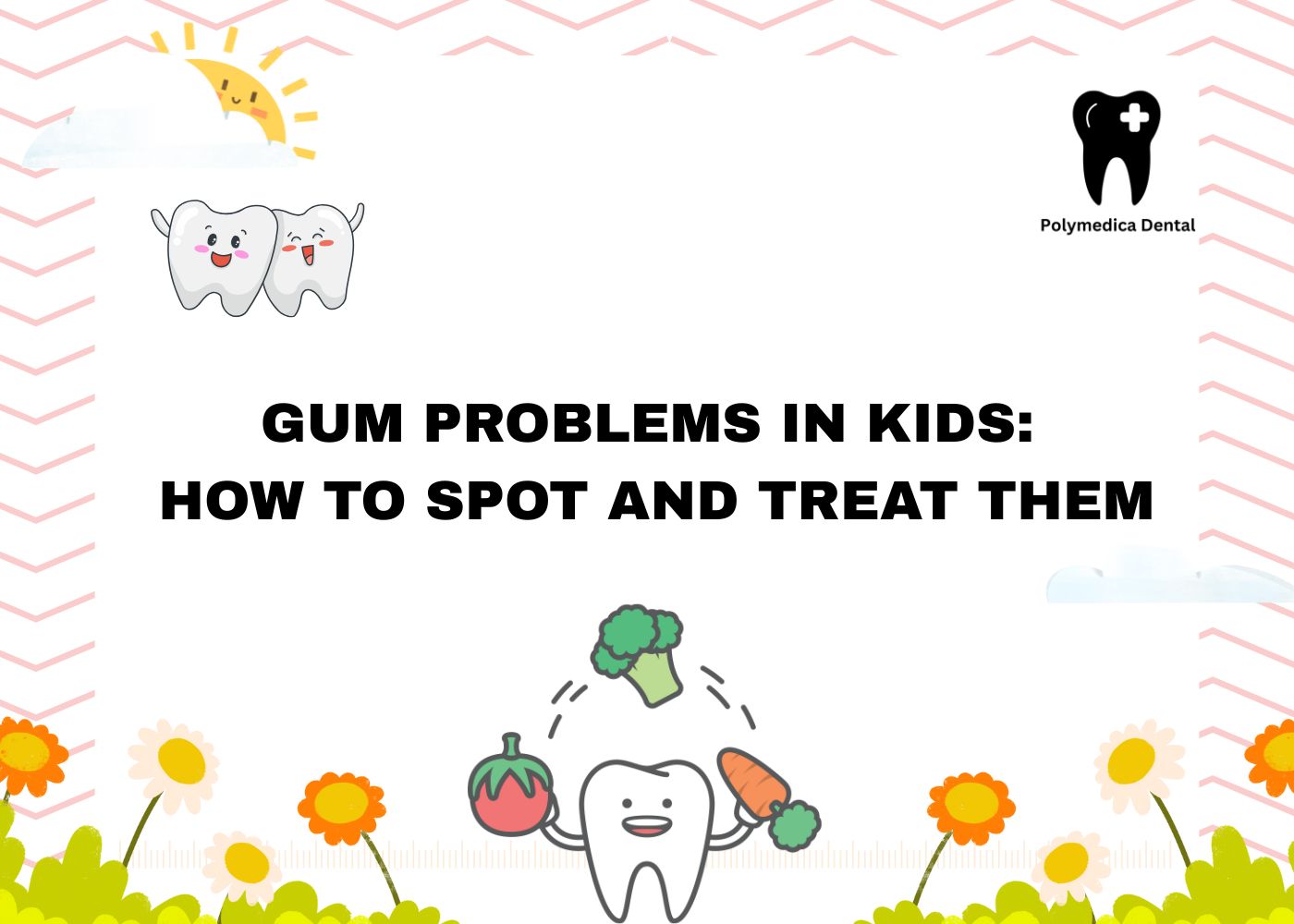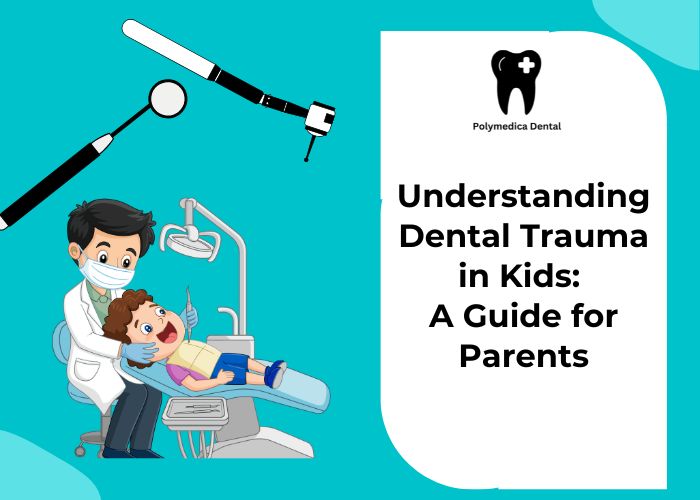

What is dental trauma in kids?
It refers to injuries affecting the teeth and surrounding oral structures in children. These injuries often happen during everyday activities like playing, sports, or accidental falls. Dental trauma can involve damage to both primary (baby) and permanent teeth.
Prevalence and common causes:
Approximately 22.7% of children worldwide experience dental injuries. The front teeth are most frequently affected due to their position. Typical causes include:
Understanding dental trauma is crucial for parents because timely recognition and response can prevent complications such as infection, tooth loss, or long-term damage. Early dental care preserves kids’ oral health and supports proper development of permanent teeth. Being informed empowers you to act confidently when your child experiences a dental injury.
When dealing with dental trauma in children, it’s crucial to identify the types of dental trauma accurately. Traumatic dental injuries (TDIs) can affect both primary teeth and permanent teeth, and understanding the nature of these injuries helps in providing timely care.
Dental trauma broadly divides into two main categories: soft tissue injuries and hard tissue injuries. Each requires different attention and management.
Soft Tissue Injuries
Soft tissue injuries involve damage to the gums, lips, tongue, cheeks, or other oral mucosa. These injuries often accompany dental trauma but may sometimes be the only visible sign of an accident.
Soft tissue wounds tend to be painful, bleed easily, and can cause swelling. Immediate care involves controlling bleeding by applying gentle pressure with a clean cloth and keeping the area clean to prevent infection. Prompt evaluation by a dentist or physician is necessary to check for any underlying tooth or bone injury.
Hard Tissue Injuries
Hard tissue injuries affect the teeth themselves or supporting bone structures. These are often more complex than soft tissue injuries because they can impact tooth vitality and long-term oral health.
Common types include:
Hard tissue injuries demand professional assessment for appropriate treatment such as bonding, crowns, pulpotomy, or even extraction depending on severity and whether it involves primary or permanent teeth.
Soft tissue injury recognition focuses on visible bleeding, swelling, and pain around oral tissues while hard tissue injury identification depends on visual inspection of damaged teeth including chips, cracks or displacement. Knowing these differences helps parents provide immediate first aid effectively before reaching a pediatric dentist for specialized care.
Periodontal injuries affect the supporting structures of the teeth, including the periodontal ligament and alveolar bone. These types of dental trauma often occur from impacts during falls, sports, or collisions. Understanding these injuries helps in assessing severity and necessary care.
Key Types of Periodontal Injuries
Key types of periodontal injuries include:
These traumatic dental injuries (TDIs) can involve both primary teeth injuries and permanent teeth. Prompt recognition and management are essential to prevent complications affecting oral health development.
Understanding the risk factors dental trauma kids face helps parents take proactive steps to protect their children. Certain anatomical and behavioral traits increase the likelihood of dental injuries.
Anatomical Risk Factors:
Behavioral Risk Factors:
Recognizing these risk factors allows you to implement preventive measures tailored to your child’s needs. Adjusting habits, ensuring protective equipment use, and addressing anatomical concerns with a pediatric dentist can reduce the incidence of traumatic dental injuries.
Knowing the right steps for first aid dental trauma kids can make a significant difference in the outcome of an injury. Immediate care helps reduce pain, prevent infection, and improve chances of saving the tooth.
Key actions to take right after an injury:
Seek professional dental care immediately after providing first aid. Quick action often determines whether injured teeth can be saved or require further treatment.
Understanding what is dental trauma in kids helps you grasp why treatment varies widely based on the injury’s severity and the involved tooth type—primary (baby) or permanent.
Treatment strategies for dental trauma children include:
Different approaches reflect the biological differences between primary and permanent teeth as well as injury complexity. Timely professional evaluation ensures the best outcome for your child’s oral health.
Ignoring dental trauma in children can lead to serious complications dental trauma kids face later. Some consequences may not appear immediately but develop over time, affecting both the tooth and surrounding structures.
Key delayed effects include:
These complications emphasize why early diagnosis and management of dental injuries are crucial to protect your child’s oral health long-term.
Preventing dental injuries in kids starts with proactive safety measures. One of the most effective ways to protect your child’s teeth is by consistently using protective gear, especially during sports and active play.
The Importance of Mouthguards
Mouthguards are essential in contact sports like football, basketball, hockey, and even activities such as skateboarding or cycling. These devices cushion blows to the face, reducing the risk of broken teeth and injuries to the lips, tongue, face, or jaw.
Custom-Fitted Mouthguards for Better Protection
Custom-fitted mouthguards provided by a pediatric dentist offer better comfort and protection compared to over-the-counter versions. They fit snugly and allow your child to breathe and speak easily.
Additional Protection with Helmets
Helmets with face shields add another level of protection for high-impact sports.
Encouraging Safe Habits
Encourage children to avoid habits that increase injury risk like running with objects in their mouths or roughhousing without supervision.
By consistently using these preventive tools, you can significantly lower the chances of dental injuries. Teaching your child about these safety practices helps build lifelong habits that keep their smile healthy during playtime and beyond.
Choosing the best kids dentist in Gurgaon is crucial when dealing with dental trauma in children. Proper management of injuries depends heavily on the expertise and experience of the pediatric dentist. You want a specialist who understands what is a dental trauma in kids and can provide compassionate, effective care tailored to young patients.
Dr. Swati Pandey, a renowned pediatric dentist Gurgaon expert, brings extensive credentials and years of specialized training in children’s dentistry. Her approach focuses on gentle handling of dental emergencies, accurate diagnosis, and personalized treatment plans that prioritize both immediate relief and long-term oral health.
Parents seeking the best kids dentist Gurgaon trust Dr. Swati Pandey for her:
Choosing Dr. Swati Pandey means choosing confidence and quality care for your child’s dental trauma needs.
WhatsApp us